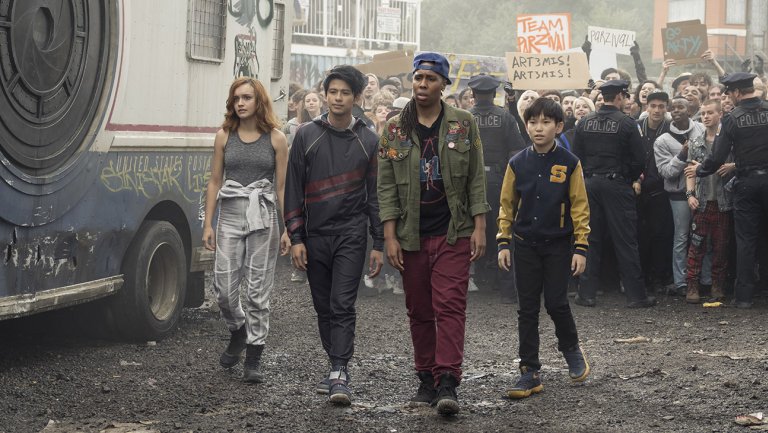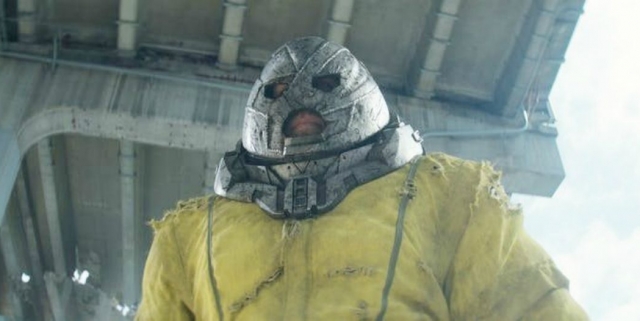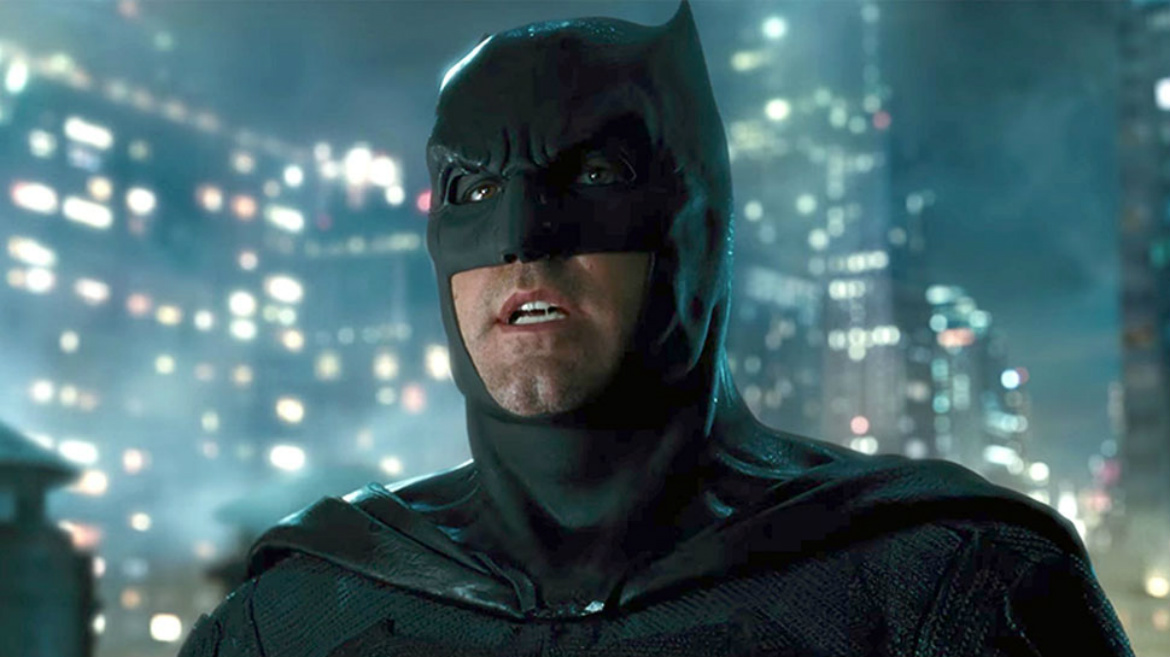chevron_left
-
play_arrow
NGradio So good... like you
share
close
Steven Spielberg has created an entire universe, but is it appealing enough for people to want to spend all their time there?
It’s been more than six years since Steven Spielberg last made an action film, and nearly a decade since his last live-action action film was released. Ready Player One ends this drought, coming so long after The Adventures of Tintin (2012) and Indiana Jones and the Kingdom of the Crystal Skull (2008). However, much like Tintin, Ready Player One is heavily reliant on computer animation. Though Ready Player One is not a fully computer-animated film, it leans even harder on groundbreaking technology in terms of trying to craft believable virtual-reality environments. In other filmmakers’ hands, this aesthetic choice might fail entirely; in Spielberg’s hands, it works about as well as possible.
Ready Player One, set nearly 30 years in the future, depicts a world so screwed over that many people choose to avoid serious problems and spend their days in the virtual-reality landscape called the OASIS. Though some sections of the film take place in the real world, primarily in Columbus, Ohio, more than half of the 140-minute film takes place inside the OASIS, meaning that we see our hero Wade Watts (Tye Sheridan) as much in flesh-and-blood form as in his VR form, known as Parzival. Even with a great filmmaker utilizing so much CGI, there’s always a fear that the characters onscreen — meant as hyper-real approximations of humans — might descend into the “uncanny valley,” the effect where what you’re looking at on screen is meant to look real but causes a sense of discomfort in audiences. (Think of the characters in The Polar Express or Final Fantasy: The Spirits Within.)
Fortunately, that’s never a concern in Ready Player One. While a few VR avatars, such as that of baddie Nolan Sorrento (Ben Mendelsohn), look somewhat like the person who designed them, enough of the OASIS characters are exaggerated enough to never cause a truly discomfiting effect. Wade’s eventual love interest, Samantha (Olivia Cooke), is known as Art3mis in the OASIS, and is depicted with larger-than-life eyes, spiky pink hair, an impossibly thin frame and gaudy clothes that serve to make her look more unreal than real. The same goes for Wade’s avatar Parzival, who may sound like Sheridan, but looks like a generic video-game avatar as opposed to something approximating an actual person.

Courtesy of Warner Bros.
If there’s a way in which the CGI feels like a drag, it’s not in how the characters are designed or brought to virtual life. It’s the OASIS itself. When we first enter the OASIS, Wade explains that the purpose of this virtual-reality world is to offer as literal an escape as possible for people around the world. In the OASIS, we’re told, anyone can do or be anything; if it’s not eating, sleeping or going to the bathroom, you can do it in the OASIS. As Wade tells us, the limits to the OASIS are any given person’s imagination. The pre-title view of the OASIS suggests something truly fabulous and fantastical, from vacation worlds to casinos to everything in between. However, the majority of the film takes place in only a few locations, none of which look terribly inviting. When we see how grim and unappealing the real world looks, it makes a kind of warped sense that people might want to escape into virtual reality. Why, then, does that virtual-reality world look roughly as unappealing as the world outside?

Jaap Buitendijk/Warner Bros.
Some choices make sense within the story — the final battle takes place on Planet Doom, so it’s not terribly surprising that the location isn’t a vacation hot spot. But the first big setpiece, during which Wade/Parzival, Samantha/Art3mis, and many others engage in a massive car race through a VR version of New York City with pop-culture obstacles trying to stop players from finding one of three keys to unlock an all-powerful Easter egg set up by the creator of the OASIS, looks equally chaotic, formless and unexciting. While Ready Player One certainly makes good on the idea that the OASIS lets people do almost anything they want, the sense of excitement and wonder is muted by the way the OASIS looks.
Ready Player One probably would have fallen apart completely in the hands of any other filmmaker than Spielberg. Few other directors are half as gifted as he is at incorporating cutting-edge computer effects in high-intensity stories, and even fewer are able to build genuine emotion by using such computer effects. But while The Adventures of Tintin used computer and motion-capture animation to its benefit, crafting a world as exciting as its source material, Ready Player One’s virtual-reality world seems as dystopic as the world everyone’s trying to get away from. The film is never able to answer why anyone would want to spend so much time in a place as visually bleak as this; if the real world is so bad, why not escape somewhere that looks genuinely exciting?
Source: hollywoodreporter.com
Written by: New Generation Radio
Rate it
Similar posts
ΔΗΜΟΦΙΛΗ ΑΡΘΡΑ
COPYRIGHT 2020. NGRADIO





















Post comments (0)